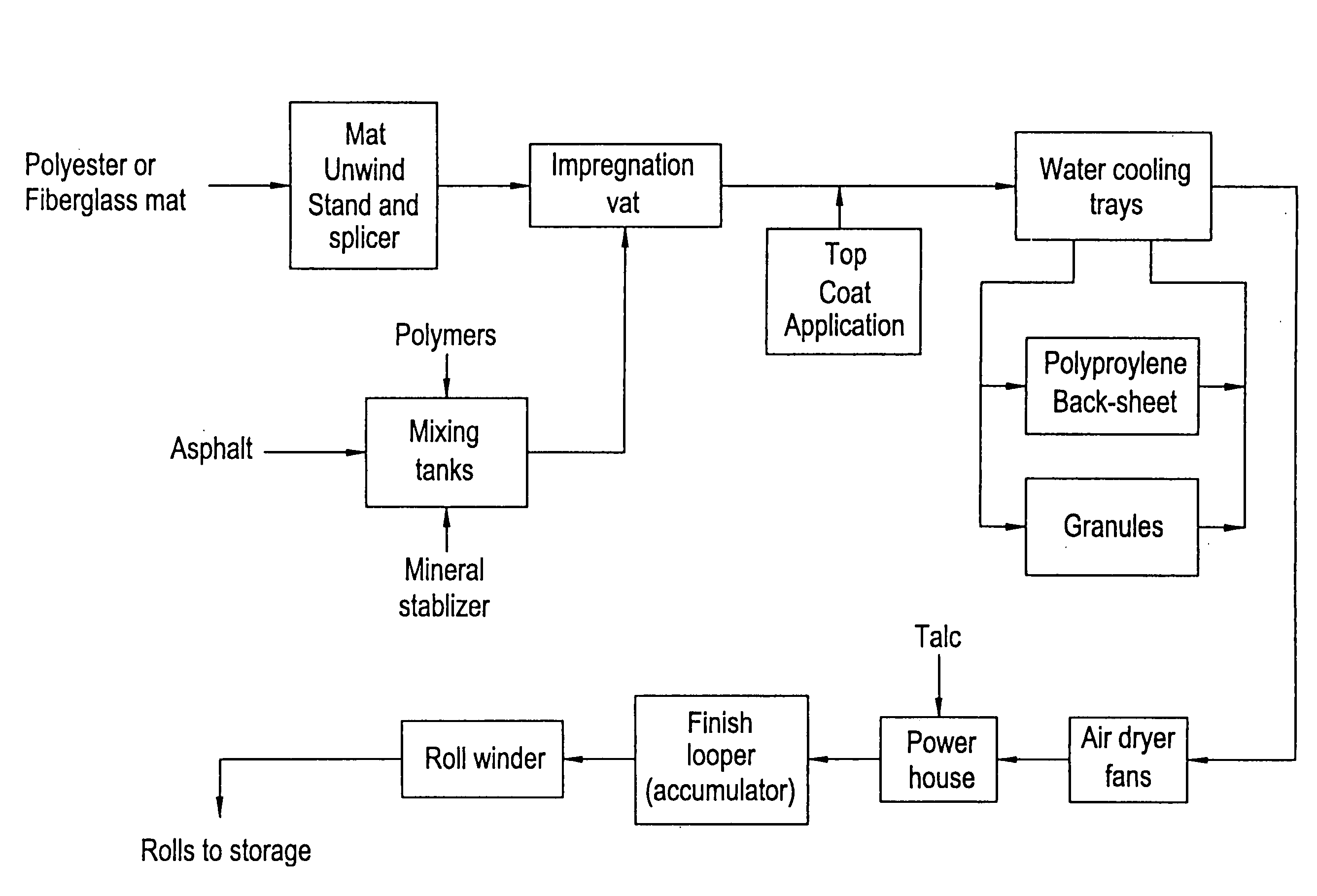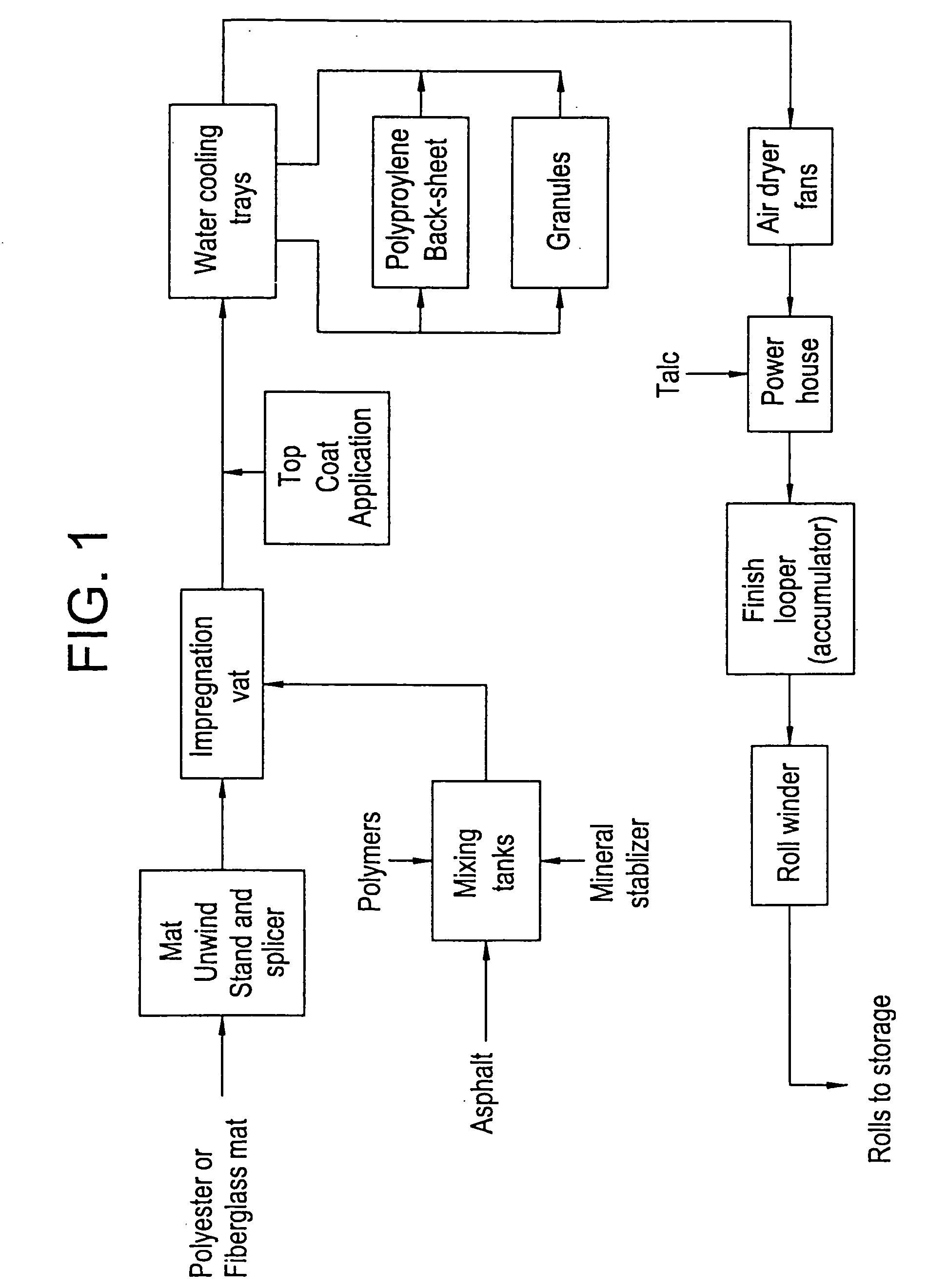Roofing products including granules with reflective coating
a technology of reflective coating and roof surfaces, applied in the field of laminate compositions, can solve the problems of major maintenance expenditures of owners, difficult coating of granules, and problems such as energy consumption, and achieve the effects of reducing maintenance costs, increasing adherence, and reducing maintenance costs
- Summary
- Abstract
- Description
- Claims
- Application Information
AI Technical Summary
Benefits of technology
Problems solved by technology
Method used
Image
Examples
example 1
[0104] The asphalt is heated to approximately 400° F. Polymer is added and high shear mixed. Fillers are added under low shear. The asphalt compound thus made undergoes Quality Control approval. It is then pumped to the production line. The asphalt compound is saturated in reinforcement. The film laminate is adhered at approximately 230° F. The combination is cooled under water, dried and rolled up in 100 square feet.
[0105] The fine white granules of the present invention provide for a higher reflectance than the traditional single-coated granules. Table 1 below shows readings of two different samples of traditional white granules, compared to readings of two different samples of the fine white double-coated granules of the present invention. The reflectivity was measured using a SSR instrument (ASTM C-1549 approved method). Reading 1 was taken in the upper left corner of the sample. Reading 2 was taken in the lower left corner of the sample. Reading 3 was taken in the upper right ...
PUM
| Property | Measurement | Unit |
|---|---|---|
| reflectivity | aaaaa | aaaaa |
| reflectivity | aaaaa | aaaaa |
| wt. % | aaaaa | aaaaa |
Abstract
Description
Claims
Application Information
 Login to View More
Login to View More - R&D
- Intellectual Property
- Life Sciences
- Materials
- Tech Scout
- Unparalleled Data Quality
- Higher Quality Content
- 60% Fewer Hallucinations
Browse by: Latest US Patents, China's latest patents, Technical Efficacy Thesaurus, Application Domain, Technology Topic, Popular Technical Reports.
© 2025 PatSnap. All rights reserved.Legal|Privacy policy|Modern Slavery Act Transparency Statement|Sitemap|About US| Contact US: help@patsnap.com


